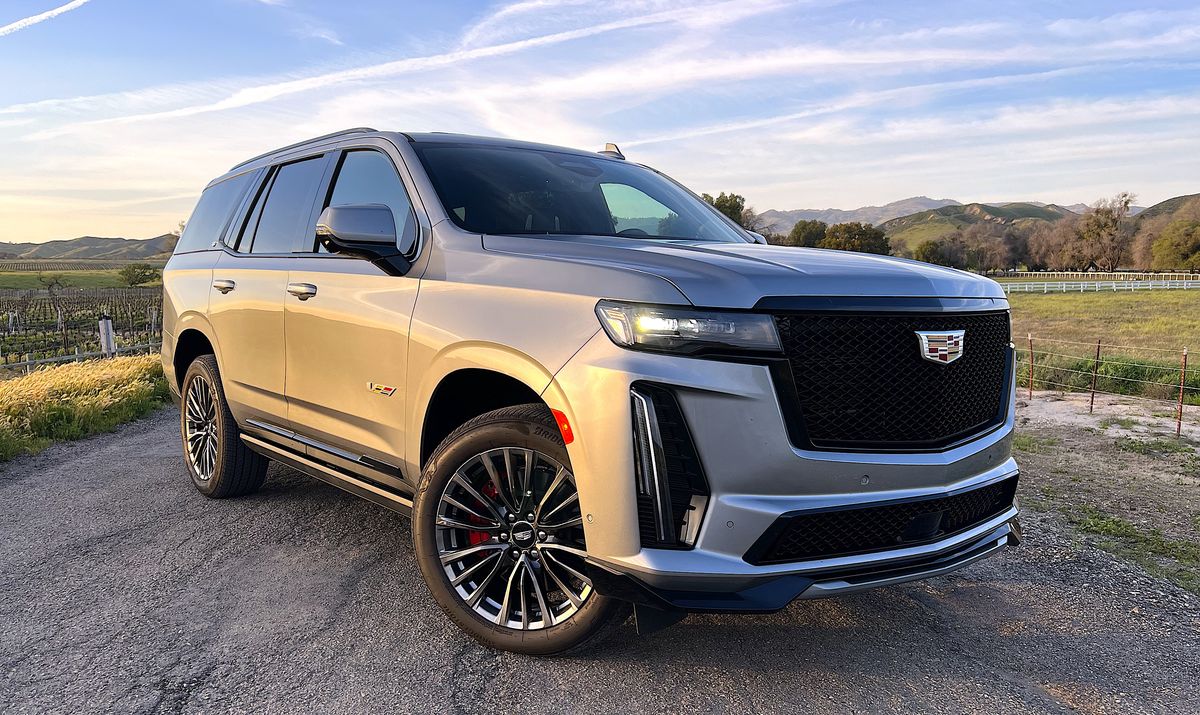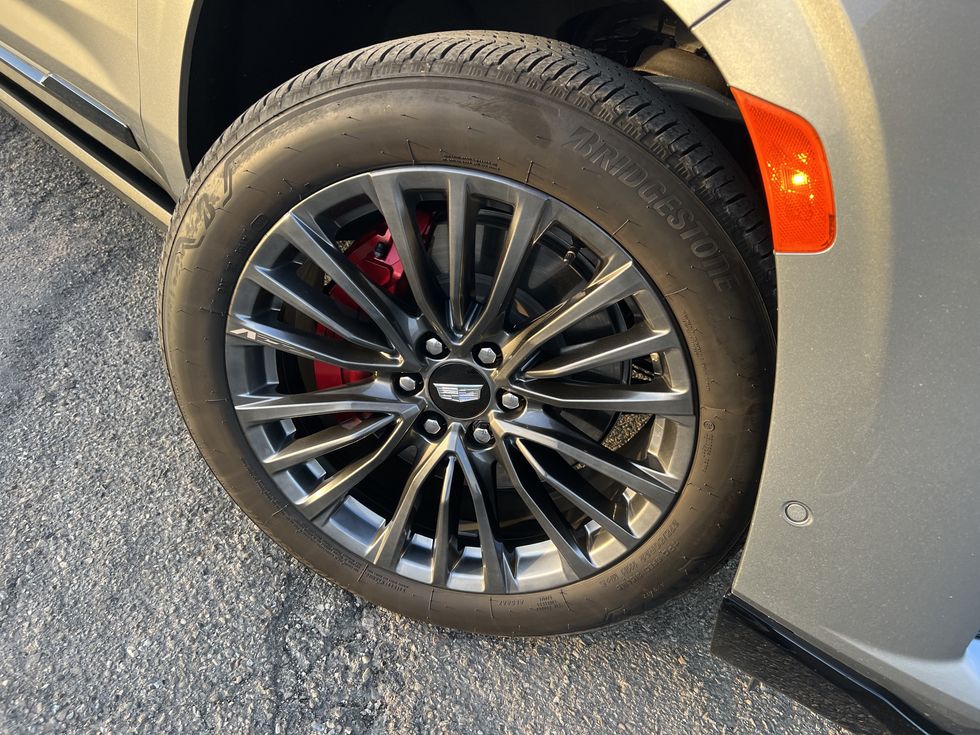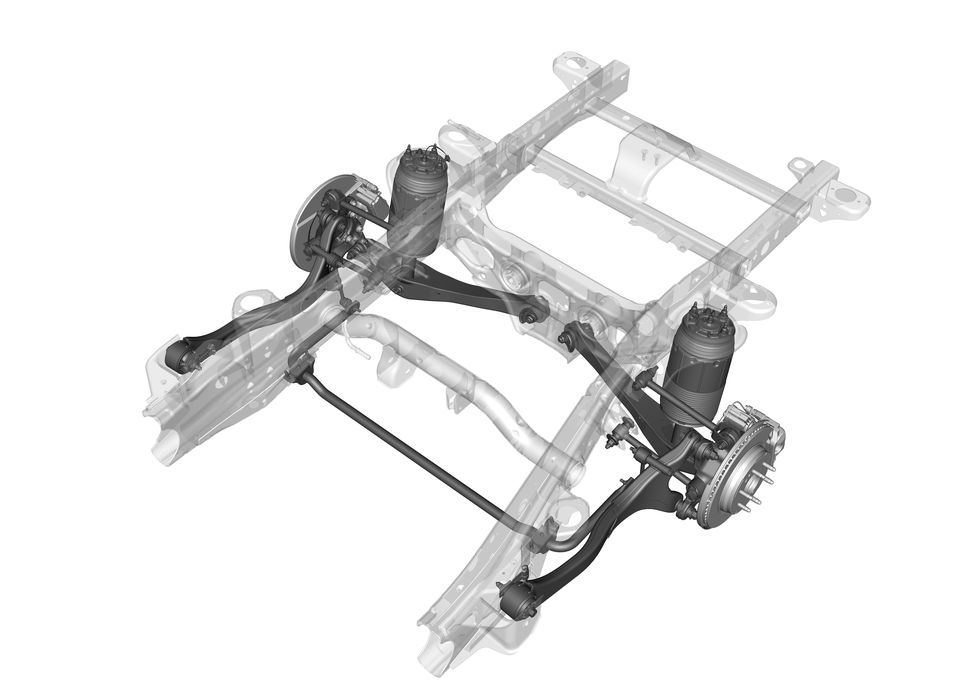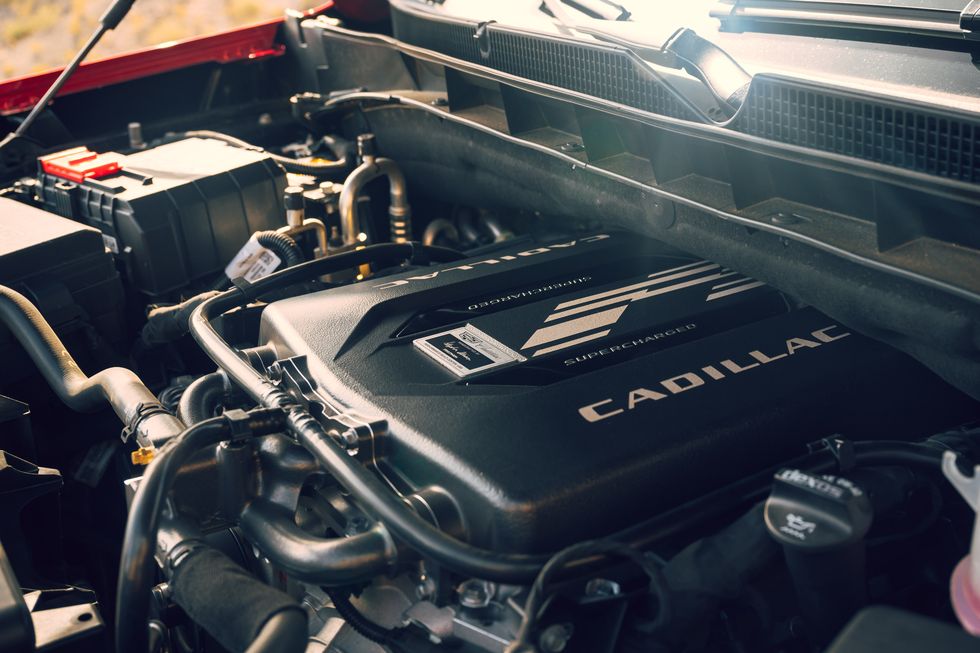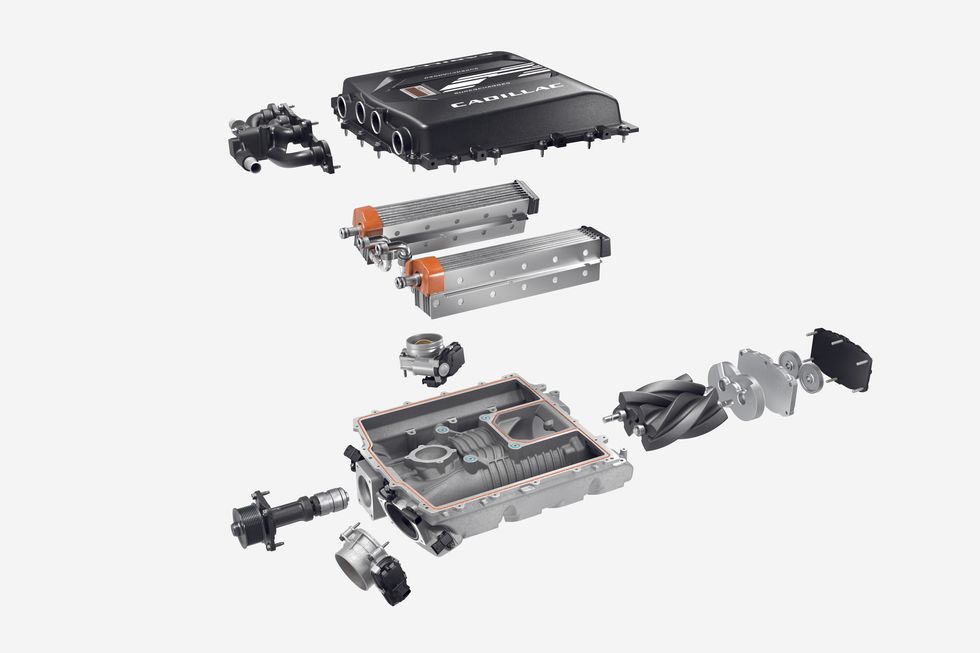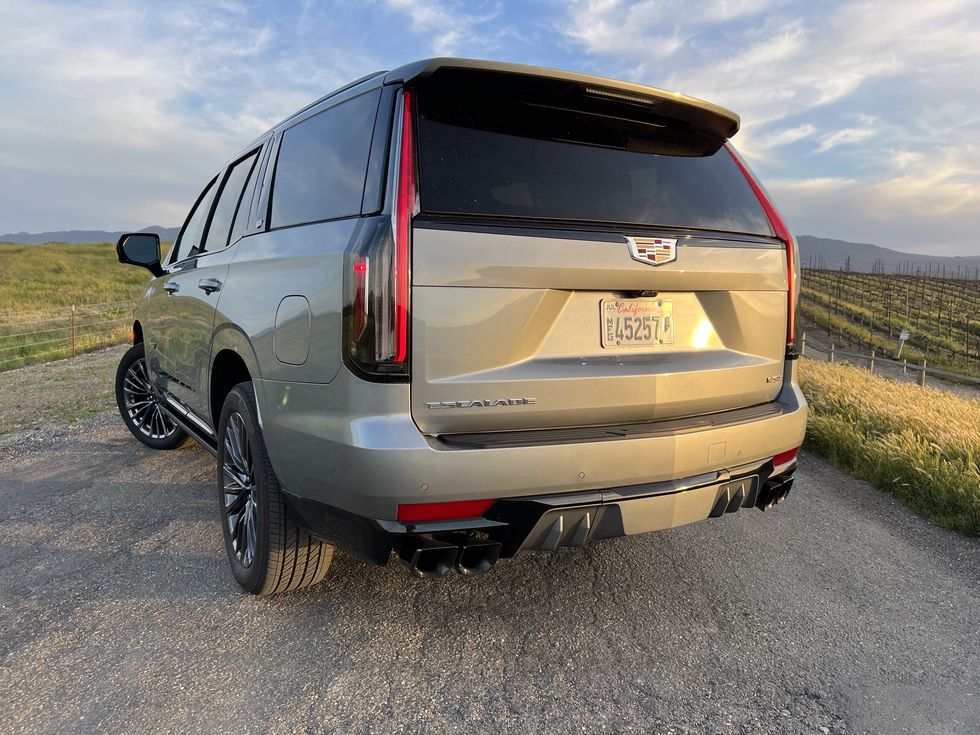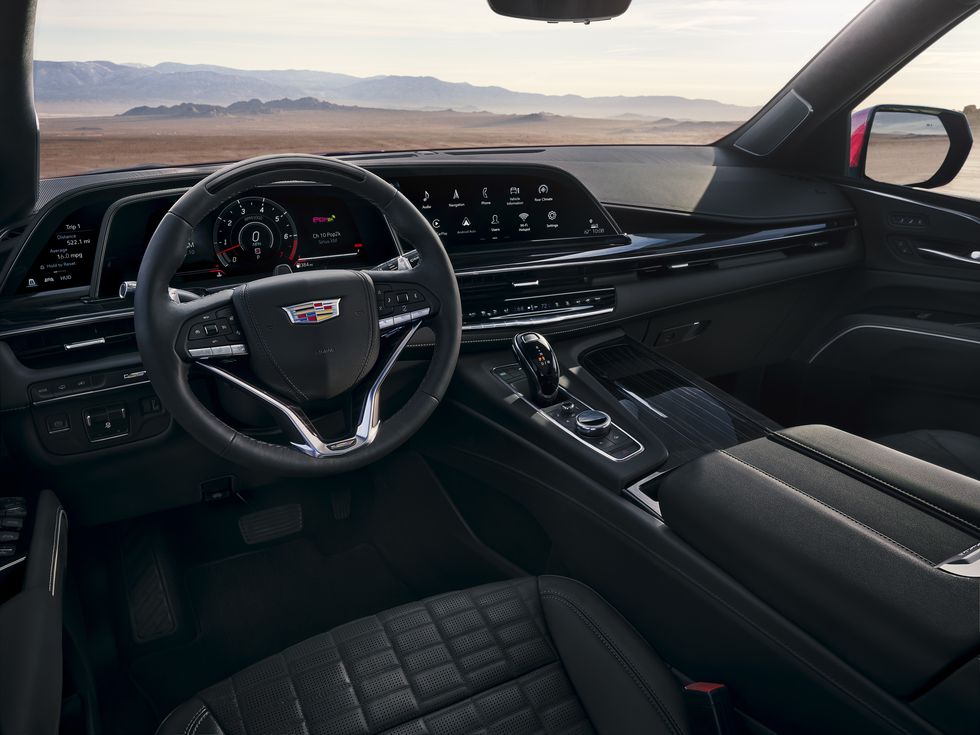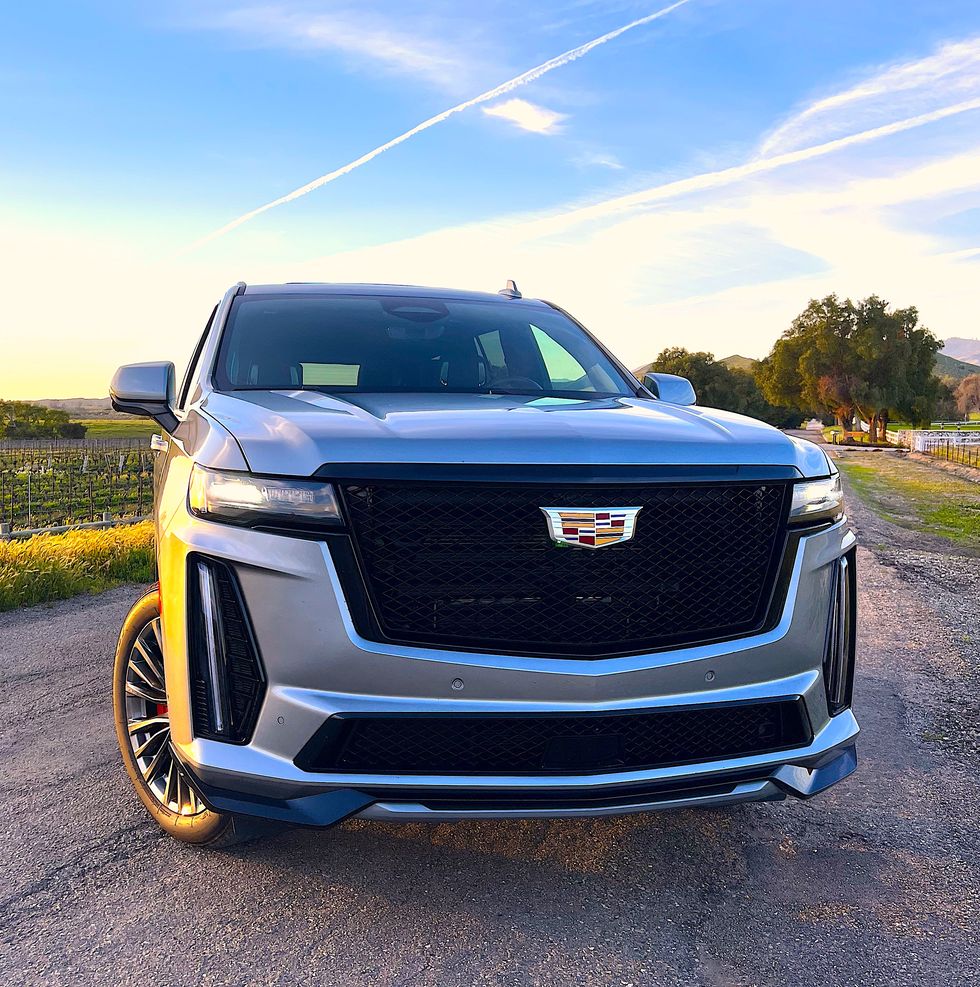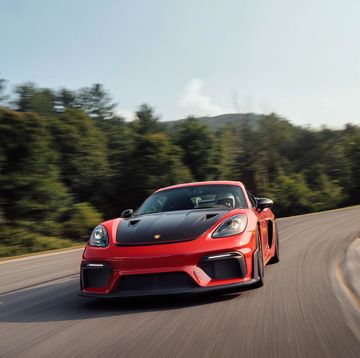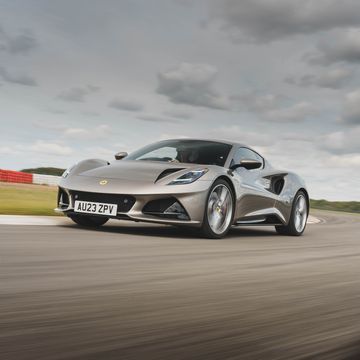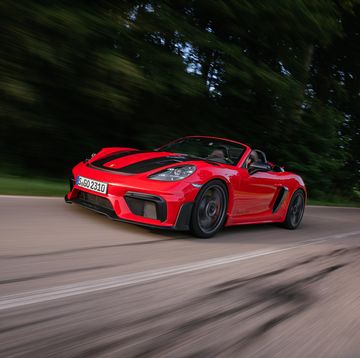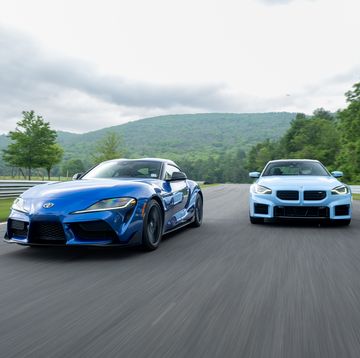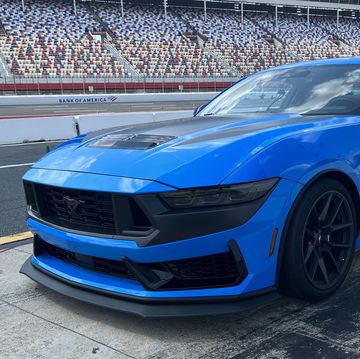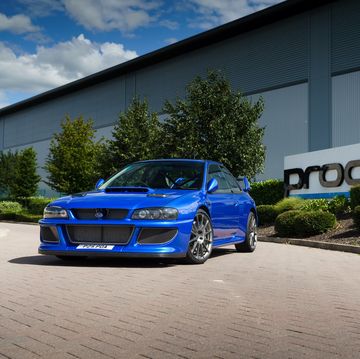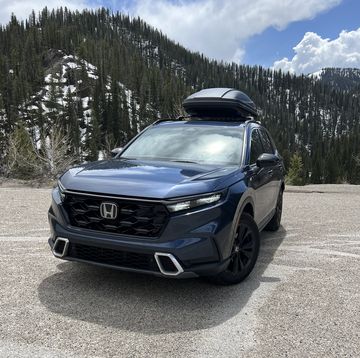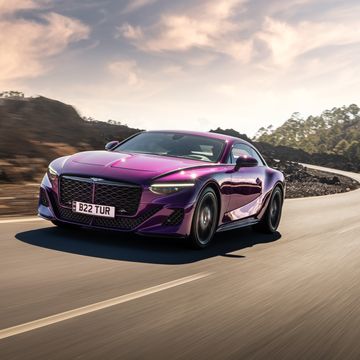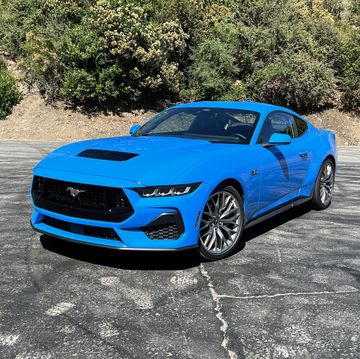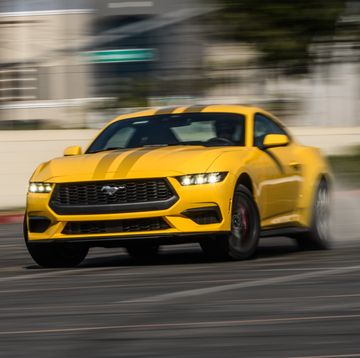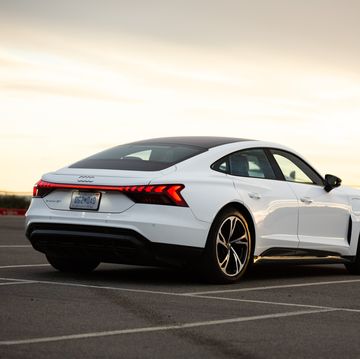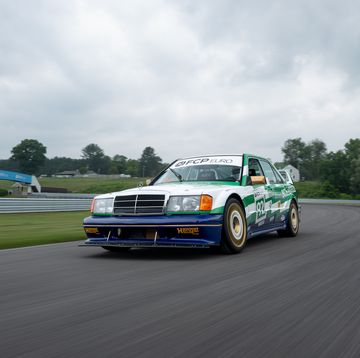General Motors is in the lunacy business. So much insanity is going on there that the Cadillac Escalade V-Series—a full-size, full-frame, truck-based SUV that is powered by a 682-hp, supercharged, 6.2-liter V-8—seems reasonable in comparison to a few other GM products. Even though, at a base price of $151,090 the V-Series is $69,900 more costly than a base Escalade.
It’s also $94,995 more expensive than a base Chevrolet Tahoe. And, come on, there’s an awful lot of Tahoe in the Escalade V-Series.
On a per unit basis, the Escalade V-Series and its longer-wheelbase, three-row brother the Escalade ESV V-Series (a supercharged Suburban), must be the most profitable vehicles GM makes. By far. Maybe back when GM was building locomotives, there was more profit on each of those. But once sales volumes are considered, GM is printing staggering amounts of moolah with the Escalade and particularly with the V-Series variant. Stag-ger-ing.
That’s why the Escalade V-Series matters to GM. Why it matters to anyone else is that it's big, stupid, and stupendous fun. This is warehouse-class SUV that pushes its blunt, smug face and hauls its massive, 6217-pound ass to 60 mph in 4.3 seconds. Its exhaust roars with pride, there’s an audible supercharger whine for menace, and it rolls on thick 275/50R22 Bridgestone Alenza A/S 02 all-season tires around wheels of the appropriately stylish diameter. It is all of the most arrogant things rendered in shiny sheet steel and shiny plastic on shiny wheels. So, of course, the first thing many new Escalade owners do is have theirs covered in a matte wrap.
What’s clearly best about the Escalade V-Series is that supercharged 6.2-liter V-8. Best, however, isn’t always what’s most impressive. And it is how well the latest GM full-size SUV platform uses that additional power that is most satisfying.
The big move for the 2021 redesign of the GM jumbos was the adoption of an independent rear suspension. It’s about as straightforward design as an IRS can get. Four links—two outboard running forward longitudinally with the frame and two lateral links that pivot at the center of the truck above the differential. The springs (airbags in this case) are positioned outboard inside the hub carriers. It’s simple and space efficient.
Because an independent system doesn’t need the space a solid axle does to swing across its length, the latest Escalade has a lower load floor. But IRS doesn’t turn Gigantor-class frigates into road tearing sport cars. Isolating the ride motions of each wheel helps with ride quality and noise isolation and a lot of other things. This Escalade feels planted. Throw in air springs, zippy active dampers, and an aggressive stability control system, and it’s a body-on-frame machine that’s rugged enough to use the monster power it carries. But handle? The steering is still slow and kind of numb, the mass is vast, and adhesion limits are modest.
Adding big power to previous GM big SUVs with aftermarket parts (like a supercharger) almost invariably came with some compromise in manners. The tail would hop, the frame could be felt twisting, or some odd resonance would riffle through the body. None of that happens with this V-Series.
The engine is a version of the supercharged 6.2-liter LT4 V-8 first seen back in 2015 powering the Corvette Z06. It also serves in the current Camaro ZL1 and beloved Cadillac CT5-V Blackwing. But the Blackwing uses a 1.7-liter version of the Eaton Roots-style, four-lobed blower, and the Escalade gets a 2.65-liter version. While the Escalade V assembly below the blower tracks is shared with the Blackwing—same 4.06-inch cylinder bores, same 3.62-inch crank stroke and same 10:1 compression ratio and, yes, the same pushrod actuated, variable timed, two-valves per cylinder—the engine tuning is optimized for that larger blower.
So instead of Blackwing’s top engine speed of 6600 rpm, the Escalade V won’t rev past 6300 rpm. The Blackwing is rated at 668 hp at 6500 where the Escalade V's peak 682 hp occurs at 6000 rpm. But the most counterintuitive specification is that the Escalade’s engine’s peak 653 lb-ft of torque is lower than the Blackwing’s 659 lb-ft. And while the Blackwing’s peak torque production is at just 3600 rpm, the Escalade V’s peak torque production is up at 4400 rpm. Go figure. Peak torque production isn't as important as a towing-friendly broad torque curve.
Every Escalade V-Series uses GM’s 10L80 Hydra-Matic 10-speed automatic transmission. The best (and worst) that can be said of it is that it’s unobtrusive. It never does anything surprising and never seems to lose its cool choosing the best available gear.
There’s a “V Mode” button forward of the BMW-like shifter that can be used to engage the launch-control feature. With the big front Brembo binders holding the Escalade V-Series in position, and the driver’s feet mashing both the brake and accelerator pedals, the engine goes to about 1500 rpm in anticipation. Release the brakes and the thing lurches forward with gusto. It's not astonishing like a Tesla Model S Plaid, or brutal like a Hellcat-powered anything, but it is theatrical. As in it feels like a six-screen multiplex theater that’s been dropped out the back of a C-17. It makes amazing noise, its nose rises up so the driver loses track of the horizon, and you can feel the grain of the leather steering wheel wrap imprinting itself onto your fingers.
That all is for the good. After all, most things this big have loading docks in back and access to a railroad spur. But, ignoring the electrics a moment, there is a more powerful American SUV—the Dodge Durango SRT Hellcat packs 710-hp – and the made-in-Alabama Mercedes-Maybach is more expensive at $171,500 to start. Include the zappers and there’s the Rivian R1S SUV at 835-hp from its four electric motors that will hit 60 mph in only 3.1 seconds.
So, the Escalade isn’t America’s quickest, most powerful or most expensive SUV. But it is the most comfortable with a mix of traditional luxury details and digital delights that can’t be matched by competitors. Plus with GM’s Super Cruise engaged it will practically drive itself. The Escalade V-Series is the most, well, American American SUV.
And it doesn’t seem too loony when one keeps in mind that GM also makes the 1000-hp, 9640-pound Hummer EV, the brilliant CT5-V Blackwing and the transcendent, mid-engine Corvette Z06. Now, there's even an electric Escalade, the Escalade IQ. And that's where the discussion turns back to money.
GM needs the insanely profitable Escalade V-Series (and all the other Escalade variations) so that it can finance the electrics it has coming. There’s something ironic about a gas-slurping hauler (R&T got about 12 mpg while it had it) like the Escalade V-Series making the money needed to render it obsolete. The big question for GM is if it can make electric vehicles that make this much money, too.
John Pearley Huffman has been writing about cars since 1990 and is getting okay at it. Besides Car and Driver, his work has appeared in the New York Times and more than 100 automotive publications and websites. A graduate of UC Santa Barbara, he still lives near that campus with his wife and two children. He owns a pair of Toyota Tundras and two Siberian huskies. He used to have a Nova and a Camaro.
